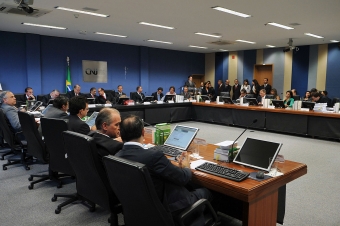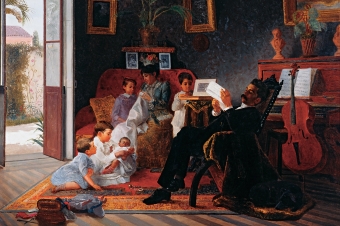Summary:
The undergraduate students from the 8th period made a research about the Jury Court procedure and a data collection after a technical visit to the Police station to Police investigation analysis.
Objective:
- GENERAL GOALS: This activity is inserted in the course’s objective, within its perspective of graduate professionals with a critical position, it has an active participation during the learning process and academic literacy.
- SPECIFIC GOALS: With a scope of developing the academic literacy and the cognitive flexibility theory the students, after a previous study about the Jury Court and other Penal Procedural Law II contents, are educated by the professor for a technical visit to the Police Station with a scope of picking the elements for a preparation of their own Police investigation analysis and from there, a Jury Court activity.
- DEVELOPED ABILITIES: It was pretended to develop the text interpretation, legal argumentation and criticism.
Dynamics:
- TEACHING METHOD: critical reading, problem-based learning and academic literacy.
- REQUIREMENTS: In relation to the students, besides the necessary preparation for the Police station visit, they get together, during the semester, in classes and extra-class activities for the Police investigation analysis procedures and Jury Court presentation.
In relation to the professor, the beginning of the semester was used by him to determine which Police station would be utilized on the technical visit and then students could analyze defense of the Police investigation analysis and elaborate the activity.
- DEVELOPMENT OF THE DYNAMICS: aiming the improvement and expansion of the Penal Procedural Law knowledge, it was proposed by the faculty the confection of a process that resulted in a Jury Session. The objective was to demonstrate all the adopted procedures until the Jury Court Judging phase.
Thus, the class was divided in 04 groups; the first was responsible for the investigation analysis, the second for the indictment, the third for the accused defense and the fourth for the judgment procedure, having a judge, a scrivener and the relevant assignments.
After the elaboration of the written part, like in a real process, it was performed a Judgement and Instruction Court Hearing – JICH, involving all directed participants cited inside the elaborated process. At the occasion, it was heard the involved parts, the witnesses, the prosecution and the defense, which made their pronouncements related to the case. As planned, the judge responsible for the instruction gives the process progress for the decision of the Jury Court.
As the work proposal, it comes up a little theatrical play simulating the real case. In this theatrical play, the involved people should demonstrate how it happens in a real ritual. After the summary proceedings, it was scheduled the date for the presentation and a video confection of the simulated Jury.
The classroom was organized with a court layout and the Health and Vigilance Course students (Pronatec) helped us, composing the jurors’ body. It was a way to make a neutral sentence decision as is done in a real jury.
After the conclusion of the theatrical part, the video edition was made. The proposal of the video was to demonstrate to the future Penal Process students how the practical procedural process and the Jury Court procedures are done, showing to these students a wide view about practical aspects. Using this video, the students have a critical capacity and also the discernment to correct the failures that could be witnessed. Afterward, they could elaborate new videos with new indictment and defense lines.
- ATTENTION IN THE CLASSROOM: The students should report to the professors all the steps covered to monitor the theatrical action.
Evaluation:
- GRADE EVALUATION: The activity had an evaluative character, which the analysis was based on the following parameters: writing and investigation analysis elaboration in all phases; the work planning for the Jury Court achievement; case contextualization, orality and creativity; analyses of the penal procedural contents inserted on the activity.
Observation:
During the course, students made two activities related to the Jury Court: when freshmen, an interdisciplinary work during the 1st period (v. another Simulated Jury activity) and as seniors during the 8th period. Thus, the students verified some comparative aspects between the work done in the beginning of the course and in the end during the Law undergraduate learning process.







